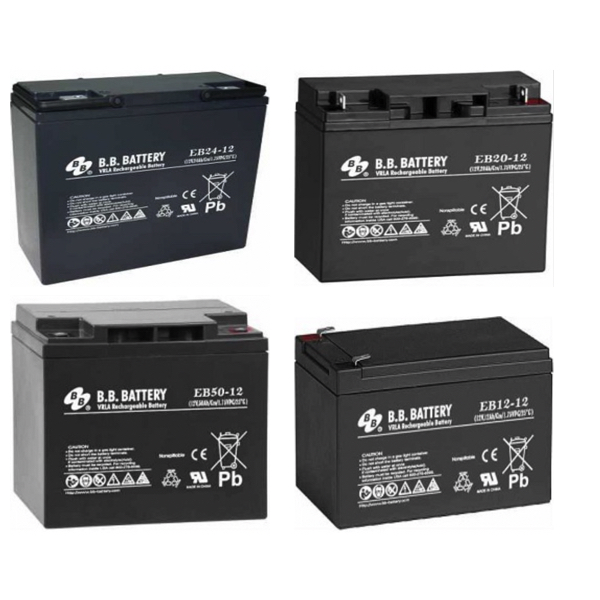High Cycle Batteries

High-cycle batteries are designed to deliver reliable power over repeated charge and discharge cycles, making them well-suited for applications that demand frequent cycling and consistent performance. RSP Supply offers a selection of high-cycle and long-life batteries manufactured by BB Battery, commonly used in industrial power systems, backup power applications, and energy storage solutions.
Unlike standard lead-acid batteries, high-cycle batteries are engineered to provide extended cycle life when operated at controlled depths of discharge (DOD). In most battery technologies, cycle life is directly related to how deeply the battery is discharged during each cycle. Operating at a lower DOD, such as 50 percent, significantly increases the total number of usable cycles. While typical lead-acid batteries may provide only a few hundred cycles, high-cycle batteries can deliver substantially more cycles under proper operating conditions.
High-cycle batteries typically use valve-regulated lead-acid (VRLA) absorbed glass mat (AGM) technology. AGM batteries offer higher power density, faster recharge times, and longer service life compared to flooded lead-acid batteries. These characteristics make them suitable for applications such as off-grid power systems, electric vehicles, and uninterruptible power supply (UPS) systems, where reliability and repeatable performance are critical.
FAQs
Q: What are high-cycle batteries used for?
High-cycle batteries are used in applications that require frequent charging and discharging, such as backup power systems, renewable energy storage, and industrial power applications.
Q: How does depth of discharge affect battery life?
Depth of discharge directly impacts cycle life. Batteries discharged to lower percentages, such as 50 percent, typically achieve more charge/discharge cycles than batteries frequently discharged to higher levels.
Q: How do high-cycle batteries differ from SLI batteries?
SLI (Starting, Lighting, and Ignition) batteries are designed for short, high-current bursts and are not intended for deep cycling. High-cycle batteries are built to handle repeated cycling with longer overall service life.
Q: What technology is used in high-cycle batteries?
Most high-cycle batteries use VRLA AGM technology, which provides longer lifespan, higher power output, and faster recharge times compared to flooded lead-acid batteries.
Q: How do you wire batteries to increase voltage or capacity?
Wiring batteries in series increases system voltage without increasing capacity, while wiring batteries in parallel increases capacity (amp hours) without changing voltage.
Why Buy High-Cycle Batteries from RSP Supply
RSP Supply offers a reliable selection of high-cycle and long-life batteries from trusted manufacturers such as BB Battery. Our product offerings support demanding power applications where durability, repeatable performance, and extended cycle life are required. Customers rely on RSP Supply for technically accurate battery solutions, knowledgeable support, and dependable sourcing for industrial energy storage needs.

